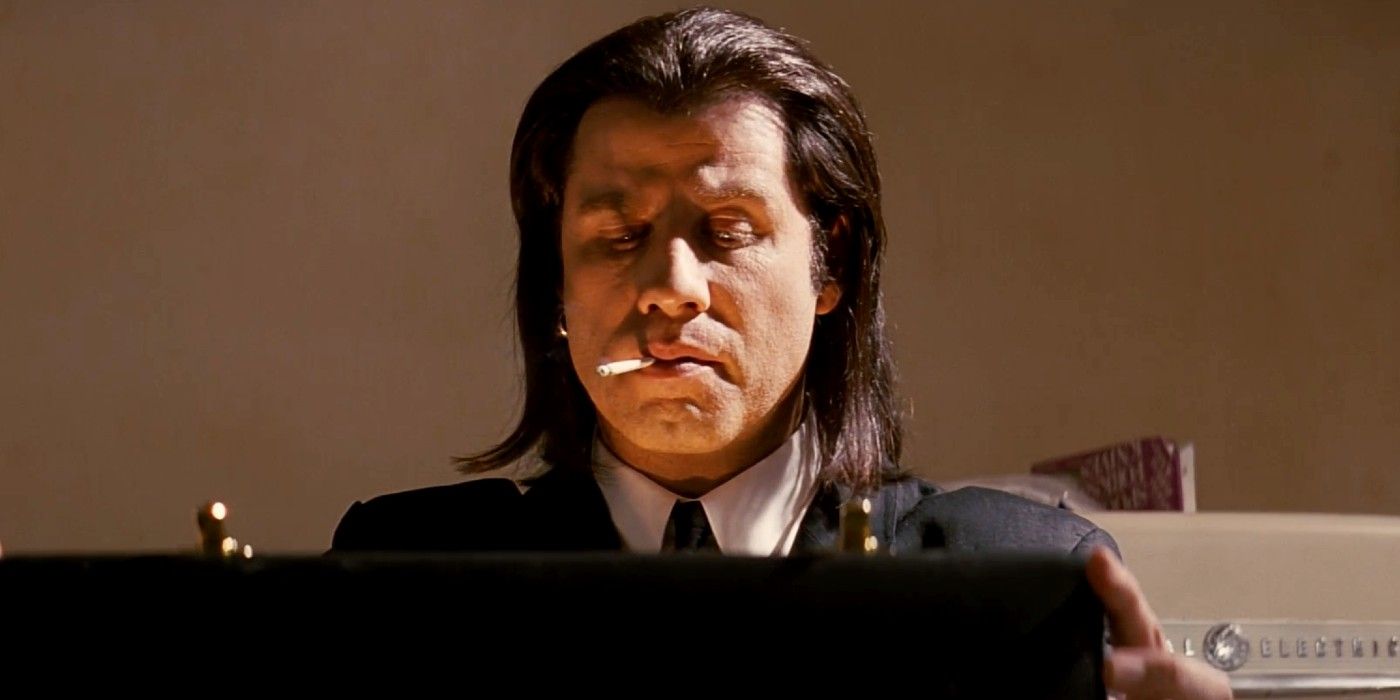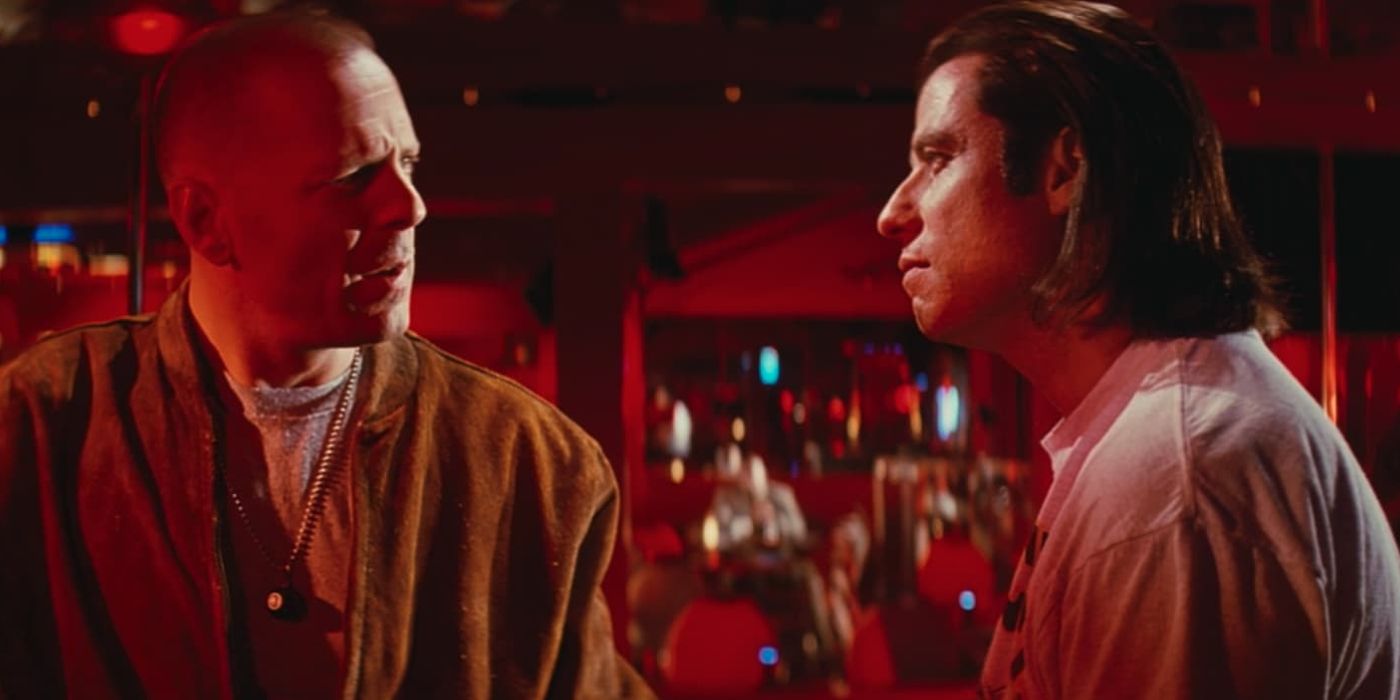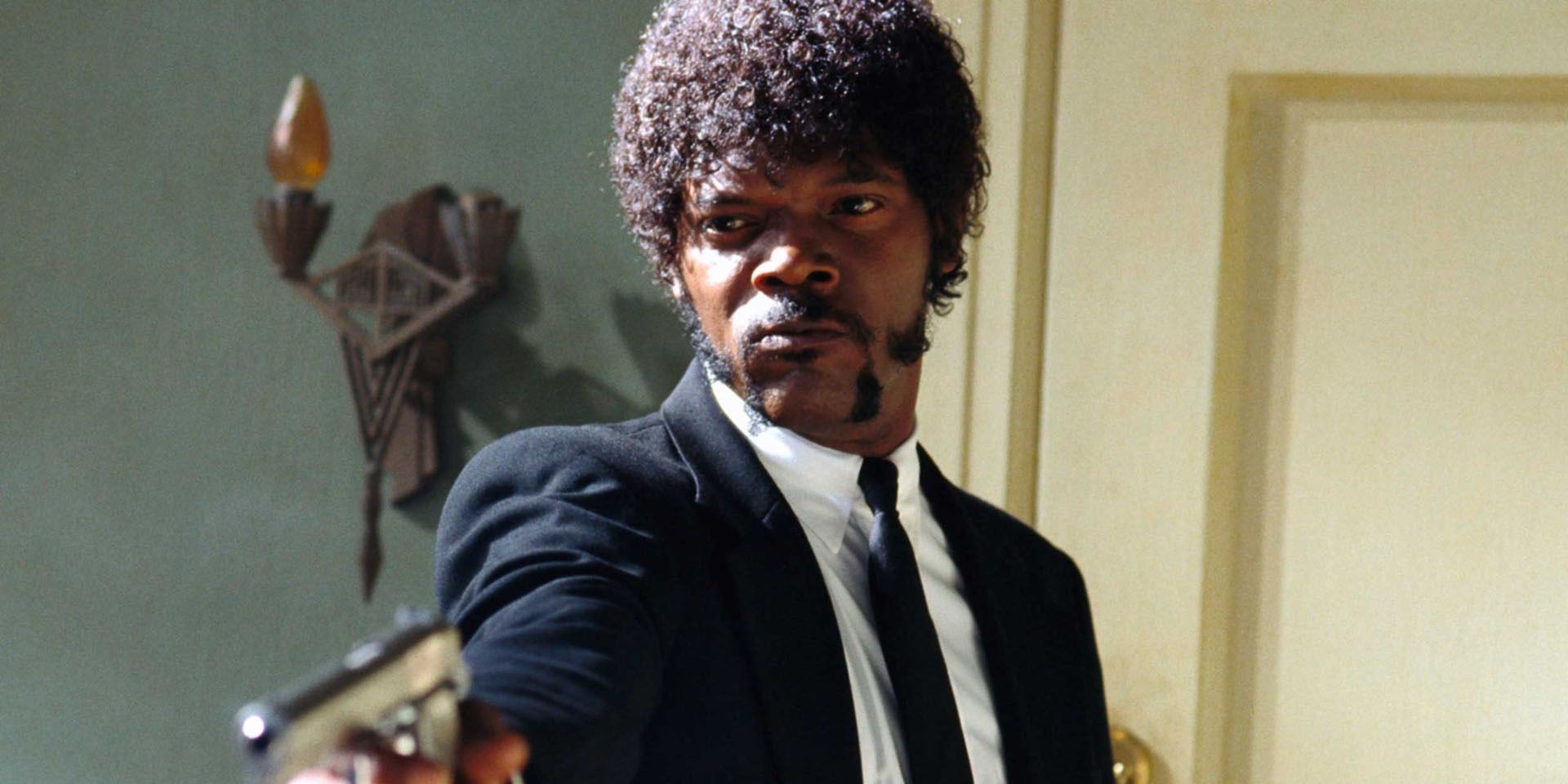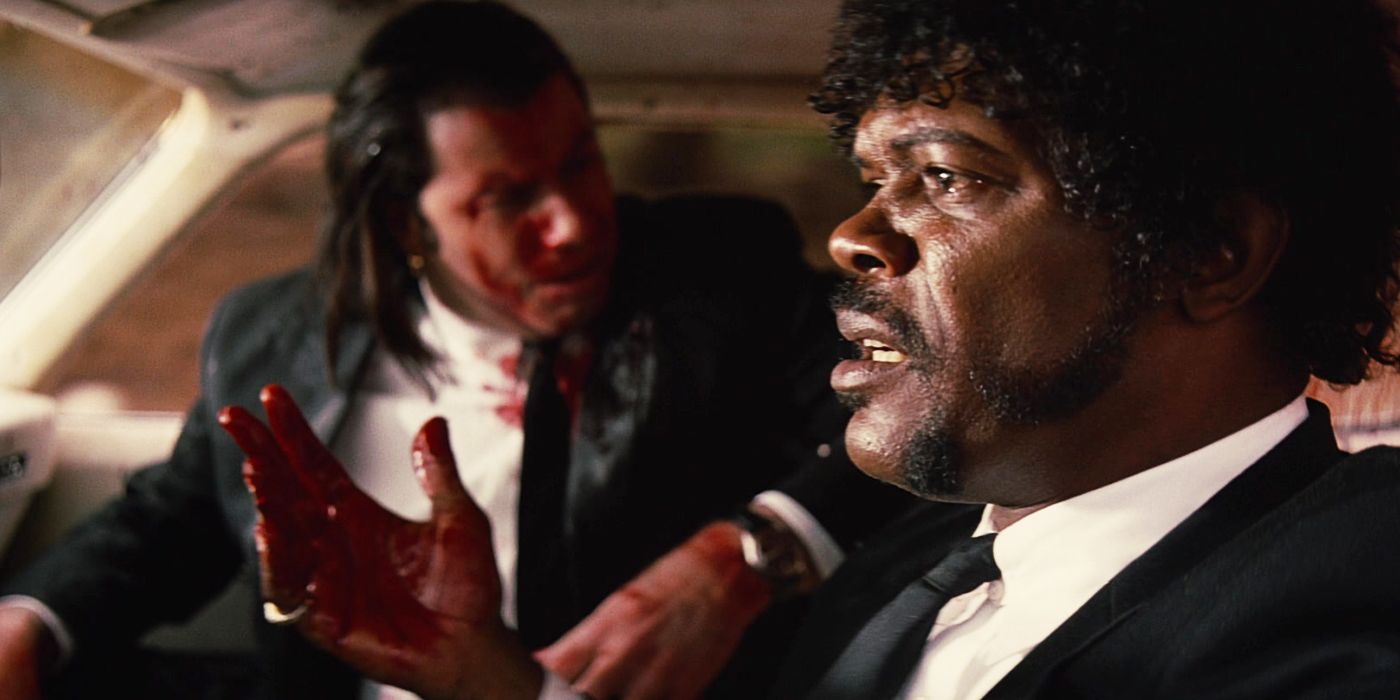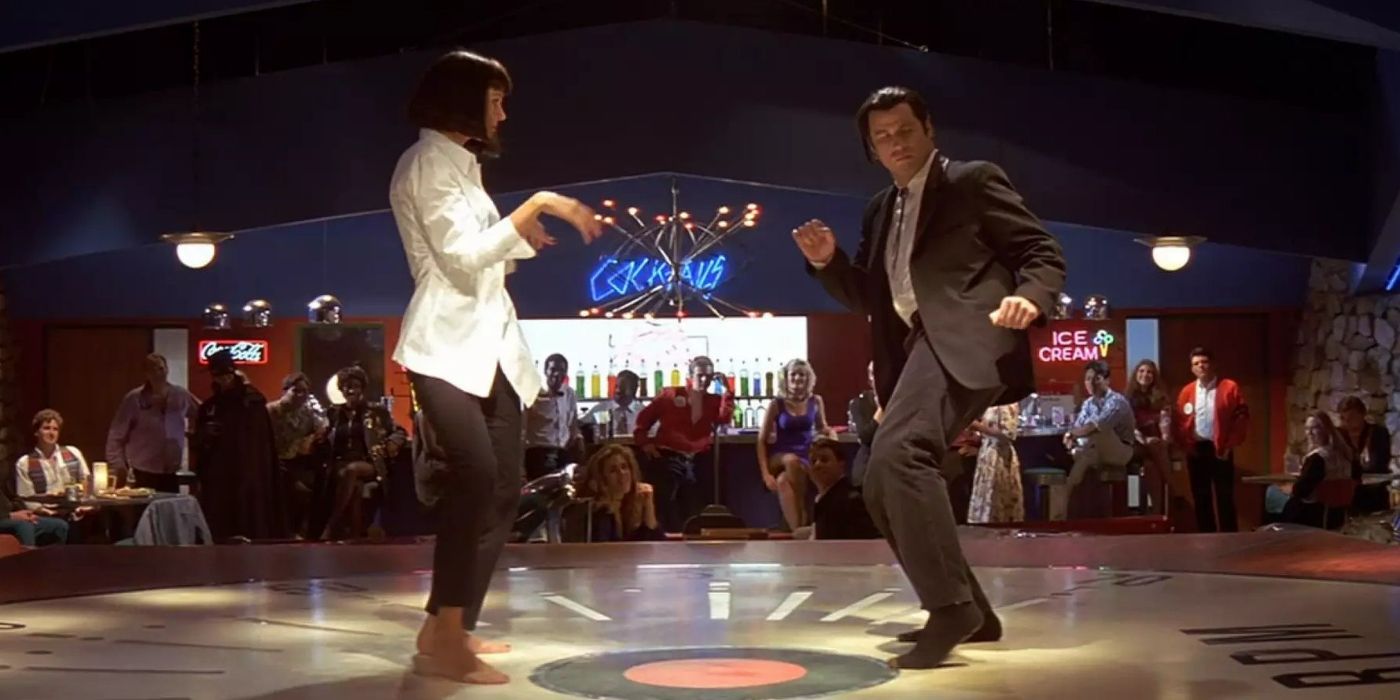The cultural impact of Quentin Tarantino’s Pulp Fiction explains why the movie is still discussed and debated. Quentin Tarantino’s second movie is one of the most universally beloved films of all time, although the method of storytelling means its ending is confusing for some. Pulp Fiction follows various characters over a short period in intertwined stories. Its continued relevance to pop culture and lasting legacy speaks for itself, but its story leads up to the final moments as the ending of Pulp Fiction explained how it all connects.
There has been endless debate over the exact meaning of certain scenes, the spinning of various Pulp Fiction fan theories, and analysis of practically every shot in the film. However, due to the non-chronological manner of storytelling that Tarantino opted to take for Pulp Fiction, its ending is sometimes considered relatively confusing. In addition, Tarantino is known for his love of deep and symbolic narrative devices within his movies, meaning that there’s far more to Pulp Fiction‘s ending than meets the eye.
Why Pulp Fiction’s Final Scene Isn’t The Chronological Ending
It Is Set In The Middle Of The Movie
One of the biggest mysteries in Pulp Fiction has to do with the film’s story order, with it famously not being told in chronological order. The final sequence in Pulp Fiction sees Jules and Vincent take on the robbers at the diner from the beginning of the film. Although most ordinary films would have their ending be the last chronological point in the film, Pulp Fiction‘s final scene takes place somewhere in the middle of the chronological events of the film. Pulp Fiction makes it impossible to exactly pin this down, as some elements make the story seem almost circular.
In Pulp Fiction, the scene in which Jules and Vincent are in the diner takes place between the opening diner scene in which the two robbers talk and the sequence in which the Pulp Fiction protagonists deal with Marsellus Wallace’s wife. At the start of this sequence, Jules and Vincent can be seen appearing after leaving the diner, creating a mystery as to where they came from that isn’t answered until the end of the film.
Despite not being the chronological ending of Pulp Fiction, the film’s final scene is the thematic ending. All of the ideas of divine intervention, forgiveness, and revenge come together in Jules’ confrontation with the robbers in the diner, explaining why Tarantino decided to tell the story in this order. This ending is one of the many reasons that Pulp Fiction is so beloved, with it remaining one of the most iconic parts of the film.
Related
10 Most Iconic Shots In Pulp Fiction
In a career full of iconic movies, Pulp Fiction is still arguably Quentin Tarantino’s most iconic work. It’s full of instantly recognizable imagery.
What Was In The Briefcase In Pulp Fiction?
One Of Cinema’s Most Infamous MacGuffin’s Explained
Perhaps the biggest question left entirely unanswered by Pulp Fiction is exactly what was in Marsellus Wallace’s stolen briefcase. There are numerous prominent theories about the contents of the Pulp Fiction briefcase, with one of the most well-known being that it contains the soul of Marcellus Wallace. There are also theories that it may contain numerous other items, including the diamonds from the heist in Reservoir Dogs, gold bars, the Holy Grail, and even Elvis Presley’s gold suit.
However, Quentin Tarantino himself explained there is no real explanation. The entire purpose of the briefcase is to serve as a MacGuffin — an object that exists solely to further the plot of the movie — and therefore, the exact contents don’t matter. Though the years of rampant speculation about the exact contents of the briefcase that Vincent and Jules acquire are certainly interesting, the truth is that it’s entirely irrelevant.
Why Butch Kills Vincent In Pulp Fiction
The Shocking Death Was An Act Of Self Preservation
One of the more shocking narrative twists in Pulp Fiction is the death of Vincent Vega. After Butch betrays Marsellus by taking his money and winning the fight he was supposed to lose, Marsellus and Vincent head to Butch’s home to kill him. Marsellus leaves and Vincent decides to use Butch’s bathroom (a side effect of his heroin addiction is constipation, and bad things happen when Vincent goes to the bathroom). Butch returns home, finds Marsellus’s gun, and kills Vincent Vega as he emerges from the bathroom.
Though the unlucky bathroom breaks of Pulp Fiction‘s Vincent Vega are something of a joke, his death is sudden and surprising. It might seem that Butch had some greater purpose for killing Vincent. He’s mostly acting on instinct. Knowing Marsellus Wallace would be prepared to kill him for his betrayal, and knowing that there was someone in his home, Butch opened fire in an act of self-preservation. Vincent’s death speaks as much to his bad luck as it does to Butch’s motivation to get out of this alive.
Ezekiel 25:17: What Pulp Fiction’s Bible Quote Means
The Bible Verse Samuel L. Jackson Quotes Isn’t Real
Throughout Pulp Fiction, Samuel L. Jackson’s Jules can be heard quoting a Bible verse, which he identifies as Ezekiel 25:17. The verse quoted by Jules is a version written specifically by Tarantino to cover the themes of redemption and salvation that are central to Jules’ story. The exact quote reads:
“The path of the righteous man is beset on all sides by the inequities of the selfish and the tyranny of evil men. Blessed is he who, in the name of charity and goodwill, shepherds the weak through the valley of the darkness, for he is truly his brother’s keeper and the finder of lost children. And I will strike down upon thee with great vengeance and furious anger those who attempt to poison and destroy My brothers. And you will know I am the Lord when I lay My vengeance upon you.”
As Vincent and Jules are in the process of reclaiming Marsellus Wallace’s briefcase from Brett when it is first recited by Jules, the quote’s initial purpose is to simply scare their victim. However, throughout the film’s story, it becomes clear to Jules that the quote has a much more profound meaning, and that he should retire from his life of crime to live a more peaceful existence.
This is ultimately what saves Jules’s life, as it means he’s not present for the events that lead to Vincent’s death. The themes of retribution and salvation touched upon in the fake Bible verse directly translate to the characters of Pulp Fiction and their respective stories, making Jules’ recital of the fictional Ezekiel 25:17 seem particularly prescient.
Why Pulp Fiction Doesn’t Reveal What Happened To Jules After The Ending
Where Does He Go After The Events Of The Film?
The fate of Vincent in Pulp Fiction is pretty clear, with him being shot and killed while he is sitting on the toilet during one of the story segments. However, the fate of Jules is left much more ambiguous, with Pulp Fiction not actually revealing what happened to Samuel L. Jackson’s character. Jules is one of the main protagonists of Pulp Fiction, so leaving his fate ambiguous is an odd choice. However, Jules’ character arc throughout the film heavily implies what may have happened to him after the violent events of Pulp Fiction.
Throughout Pulp Fiction, Jules undergoes a massive transformation, with him going from being a hardened killer to being someone capable of forgiveness. This is mostly due to his encounter with divine intervention in the film’s opening scenes, something that clearly shook him so much that it caused him to keep bringing it up throughout the film. Jules’ divine intervention pushes him away from the lifestyle of killing for money that he lived before the events of Pulp Fiction, and after his transformational period, he may have decided to change for good.
The most popular theory regarding Jules is that he left to wander the Earth after the events of the film, starting a new life somewhere. However, the film doesn’t confirm this, as it doesn’t really matter to the themes of the story. Jules’ role in Pulp Fiction is more concerned with his transformational period than his post-transformation life, explaining why Tarantino made the decision to leave his fate ambiguous.
Pulp Fiction Ending’s Real Meaning Explained
The Tarantino Movie Is About Righteous Choices
Pulp Fiction has two endings: the chronological one, and the literal final scene of the film. The film’s epilogue shows the resolution of the hold-up in the diner and serves as the ending for Samuel L. Jackson’s Jules. Having chosen to leave his criminal life behind him, Jules resolves the situation with Pumpkin and Honey Bunny peacefully, showing he is on the path to redemption. This is mirrored in the chronological ending, where Butch rides off into the sunset with his winnings to start a new life with Fabienne.
Both of Pulp Fiction‘s endings follow the same theme: a man who has committed several misdeeds makes a righteous choice, and he is rewarded with a happy ending. Jules spares Pumpkin and Honey Bunny, and Butch goes back to save Marsellus’s life, earning their happy endings. Marsellus allows Butch to live, which could also be considered in a similar light. The Bible verse of Ezekiel 25:17 proves to be paramount in understanding the deeper meaning behind Pulp Fiction‘s ending.
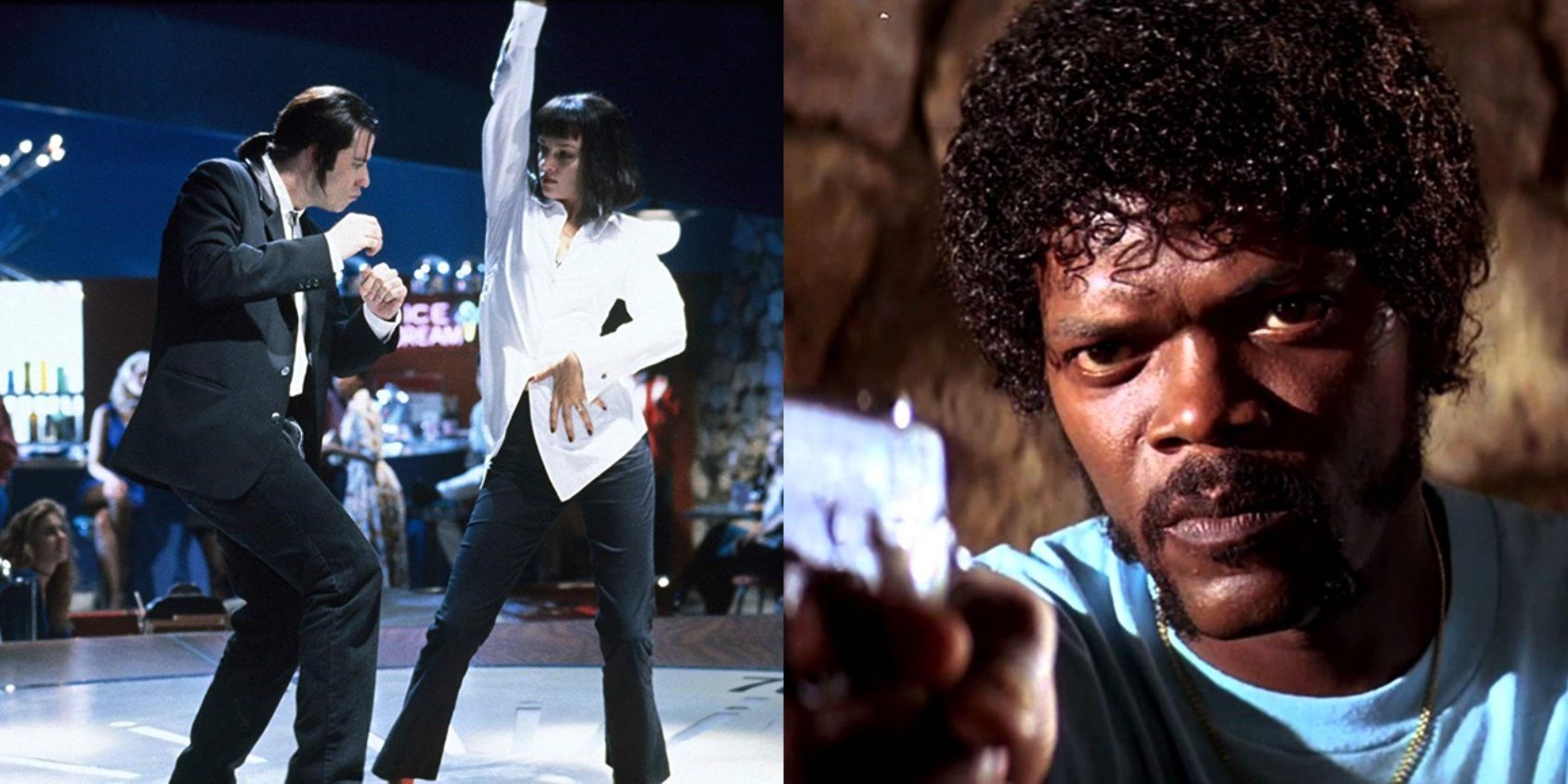
Related
10 Tarantino Trademarks In Pulp Fiction
From graphic violence to soundtrack needle-drops to pitch-black humor, Pulp Fiction has all the defining hallmarks of Quentin Tarantino’s filmmaking.
Quentin Tarantino Thinks Pulp Fiction Was Trying Too Hard
The Director Has Mixed Thoughts About One Of His Most Well-Known Projects
Though Pulp Fiction explained why Quentin Tarantino was one of the most important new voices in Hollywood, the filmmaker doesn’t think as highly of the movie as some of his fans. Looking back on the movie (via ReelBlend Podcast) Tarantino admits he has trouble not seeing some of the issues with Pulp Fiction. In comparison to his Elmore Leonard adaptation Jackie Brown, Tarantino suggests, “Opposed to Pulp Fiction, it wasn’t trying to blow your mind.”
It is an interesting point, as Jackie Brown didn’t receive the same kind of attention as Pulp Fiction on its release but has since become one of Tarantino’s most re-watchable movies because of its “hang-out” quality, which is very different from Pulp Fiction‘s bombastic approach.
Tarantino also points to another flaw he has trouble overlooking in Pulp Fiction — his direction of the movie. He suggests that instead of choosing interesting cinematic shots for the movie, he is “just capturing” the actors performing his impressive dialogue. He again points to Jackie Brown as the movie in which he started to truly become a filmmaker.
While there are some valid points in what Tarantino says, he also likely has trouble removing himself from the conversation. While Pulp Fiction might have been trying to “blow your mind,” it also largely succeeded and introduced Tarantino in a big way. As for his direction in Pulp Fiction, while he has improved over time, Tarantino still makes that movie with a slick and confident eye that many working filmmakers would envy.
Pulp Fiction’s Story In Chronological Order
The Tarantino Movie Has A Deliberately Jumbled Narrative
Pulp Fiction‘s story is broken up into seven episodes that make up four distinct stories. The film begins with a prologue scene set in a diner, then moves on to two separate episodes that make up the story of “Vincent Vega and Marsellus Wallace’s Wife.” After this, two narrative sequences make up “The Gold Watch” story, then “The Bonnie Situation,” and finally an epilogue set that picks the diner story back up.
To put Pulp Fiction‘s story in chronological order, these seven episodes need to be reordered. The flashback sequence of “Prelude to the Gold Watch” comes first chronologically, followed by “Vincent Vega and Marsellus Wallace’s Wife” prelude. “The Bonnie Situation” comes next, followed by the two “The Diner” scenes. The present-day section of the prelude to “The Gold Watch” comes next, followed by “Vincent Vega and Marsellus Wallace’s Wife.” After this is “The Gold Watch,” which is the chronological end to Pulp Fiction‘s story.



